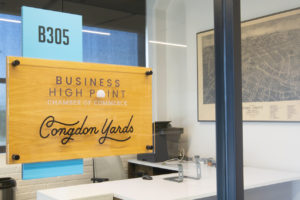How is the Extreme Heat Affecting your Exterior Signage?

Having lived through the infamous summer of 1980 in the Dallas/Ft. Worth area, where temperatures stayed at above 100 degrees for 69 days, we can honestly say that the summer of 2011 is just as bad. With nighttime temperatures starting at 106 degrees and dropping to only 88 or 90 degrees before sunrise, it made us wonder about how illuminated exterior signage is holding up to the heat in the north Texas area.
Our non-scientific analysis of driving around and looking at signage at night has shown that the answer is “not very well” for down-and-dirty quick-turn commercial channel lettering on store fronts. However, it seems that exterior signage that fits into the architectural signage marketplace is holding up the heat – but for how long?
LEDs and Electricity: It’s all about the Packaging
The reason that a lot of commercial channel letters are going dark is mostly due to the excessive outside temperatures causing the electrical components to burn out or for the LEDs inside to over-heat and burn out. Remember, the temperature on the side of the building is probably 20-40 degrees hotter than on the ground. Also, the electrical components inside the letters can increase the temperature another 40 degrees. If the sign manufacturer or installer cut corners and did not properly design the raceway or insulate the electrical components and provide sufficient heat ventilation or heat syncs for the LEDs, the extreme heat will cause these elements to fail.
Paint: Is Your Exterior Signage Holding up the Heat?
Heat causes metal to expand, cold causes metal to contract. Aluminum is one of the most malleable metals and one of the most reactive to temperature extremes. Aluminum also happens to be the preferred material choice for most exterior signs. How much will the aluminum expand? No one knows for sure, but if the paint finish on the aluminum sign does not include a UV inhibitor and if the coating was not properly applied during the painting process, chances are small cracks will begin to appear in the paint finish and the surface color will begin to fade or look blotchy.
You probably won’t notice the defects right away. It takes rain to really expose these problems, and at some point, it will rain again. When that happens, water will find a way into the cracks in the paint and the oxidation process will begin. Granted, oxidation happens at a much faster rate with steel and iron materials, but do not forget that the aluminum used in building materials is available in a wide range of alloys. Some of those alloys can include corrosive elements. It might worthwhile, when it cools down in the fall, to have an inspection done to ensure your signage is not showing signs of corrosion.

As for the paint, anyone who remembers seeing Chevy Cavaliers driving down the road with really bad paint corrosion on the hood and roof top will understand what happens when fabricators apply cheap paint and skimp on clear coat protective coating. The same thing can happen if your exterior sign fabricator did a shoddy job during the painting process. The lesson to be learned here is be sure to use a reputable signage company.
Also, you need to do routine maintenance on your sign, like washing off bird droppings, dirt and grass clippings, and general grim build up. A power washing once every 4 to 6 months should do the trick. The reason for cleaning is simple: the debris and dirt can contain organic and inorganic compounds that can eat through the clear-coat or UV coating if they are left on the sign for too long. Also, heat and sunlight can — and most likely will — increase the speed of the corrosive activity. Plus, a clean sign looks nice and improves the appearance of your facility and your brand.
Check Out Your Area of the Country
We are very aware that other parts of the U.S. are breaking all-time heat records this summer. Let us know how the signage in your area is holding up to the heat.

